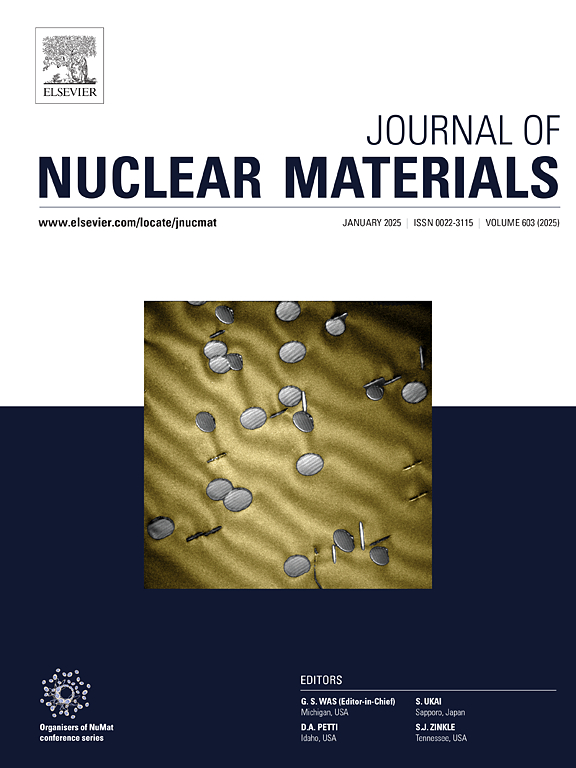Thermal conductivity of irradiated tetragonal lithium aluminate
IF 2.8
2区 工程技术
Q3 MATERIALS SCIENCE, MULTIDISCIPLINARY
引用次数: 0
Abstract
The effect of 120 keV He++D+-ion irradiation on the thermal conductivity of ceramic tetragonal γ-LiAlO2 is studied with time-domain thermoreflectance (TDTR) at temperatures between 300 and 700 K. The thermal conductivity of single crystal γ-LiAlO2 is 13.5 W/(m·K) at 300 K, and scales with temperature like 1/T. The thermal conductivity of unirradiated polycrystalline γ-LiAlO2 is 7.4 W/(m·K). Irradiation at fluences of 1 ×, 5 ×, and 10 × 1016 ions/cm2 decreases the thermal conductivity by ≈ 30 %, 80 %, and 90 %. The effect of irradiation is saturated at ion fluences of 1017 ions/cm2. Irradiation decreases the temperature dependence of the thermal conductivity. For ion fluences larger than 1017 ions/cm2, the thermal conductivity reaches a minimum value of ≈ 1 W/(m·K) that is independent of temperature.
求助全文
约1分钟内获得全文
求助全文
来源期刊

Journal of Nuclear Materials
工程技术-材料科学:综合
CiteScore
5.70
自引率
25.80%
发文量
601
审稿时长
63 days
期刊介绍:
The Journal of Nuclear Materials publishes high quality papers in materials research for nuclear applications, primarily fission reactors, fusion reactors, and similar environments including radiation areas of charged particle accelerators. Both original research and critical review papers covering experimental, theoretical, and computational aspects of either fundamental or applied nature are welcome.
The breadth of the field is such that a wide range of processes and properties in the field of materials science and engineering is of interest to the readership, spanning atom-scale processes, microstructures, thermodynamics, mechanical properties, physical properties, and corrosion, for example.
Topics covered by JNM
Fission reactor materials, including fuels, cladding, core structures, pressure vessels, coolant interactions with materials, moderator and control components, fission product behavior.
Materials aspects of the entire fuel cycle.
Materials aspects of the actinides and their compounds.
Performance of nuclear waste materials; materials aspects of the immobilization of wastes.
Fusion reactor materials, including first walls, blankets, insulators and magnets.
Neutron and charged particle radiation effects in materials, including defects, transmutations, microstructures, phase changes and macroscopic properties.
Interaction of plasmas, ion beams, electron beams and electromagnetic radiation with materials relevant to nuclear systems.
 求助内容:
求助内容: 应助结果提醒方式:
应助结果提醒方式:


